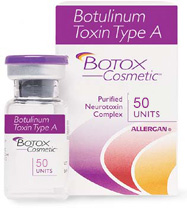
Cosmetic surgery to reduce the look of under-eye bags is an option. It is important to understand the side effects as well as the time involved. There are two options available: Transcutaneous and dermal eye bag surgery. Here are some side effects. Continue reading to learn more about the procedure and side effects. After surgery, you can enjoy smoother skin and less noticeable bags. After the procedure, you'll look younger and more refreshed.
Transcutaneous eye bag surgery
Transcutaneous eye bag surgery is a procedure that requires you to fully understand what to expect. The majority of patients experience a fast recovery. However, some individuals might require more time. The procedure is quite straightforward. To access the muscles and excess skin, your surgeon will make an incision under the lash line. The surgeon may also increase the fat. Generally, the surgery is very safe but has certain risks. These risks are very minimal and should not stop you from considering this procedure.

Dermal fillers
Under-eye bags are often treated with injectable fillers. They can improve volume and reduce puffiness. However they can also exaggerate or accentuate under-eye puffiness. Injectable fillers are generally safe and effective for light or moderate bags, though some doctors recommend them for severe under-eye bags. You should limit the use of fillers to patients who have severe or extremely large bags.
There are other options available
If you're looking for permanent ways to get rid of your eyebags, then you might consider surgical eyelid surgeries. This procedure removes fat and skin from the underside of the eyelids. The procedure is performed under local anesthesia and usually in an outpatient setting. Watery eyes, dryness or swelling are some of the possible side effects. People may also experience blurred or double vision following surgery. Rare complications include bleeding, injuries to the eye muscles and corneal damage.
Side effects
There may be some side effects following your surgery. There may be some swelling or bruising around your eyes. Bruising may also occur if you have surgery on the lower blepharoplasty. These swelling can often be reduced using cold compresses. For minor pains and aches, you can take medication. Your surgeon should be informed of any allergies and other medications before you undergo surgery.

Cost
Before you make a decision to have blepharoplasty, it is important that you understand the cost involved. This is generally an outpatient procedure. This procedure removes excess skin and fat from the under-eyelids. It improves the appearance of under-eye bags. It can be done in less than an hour and can even be done the same day. The recovery time for this procedure takes between two and four weeks. Insurance does not cover blepharoplasty. The average cost of blepharoplasty is $75 to $9200.